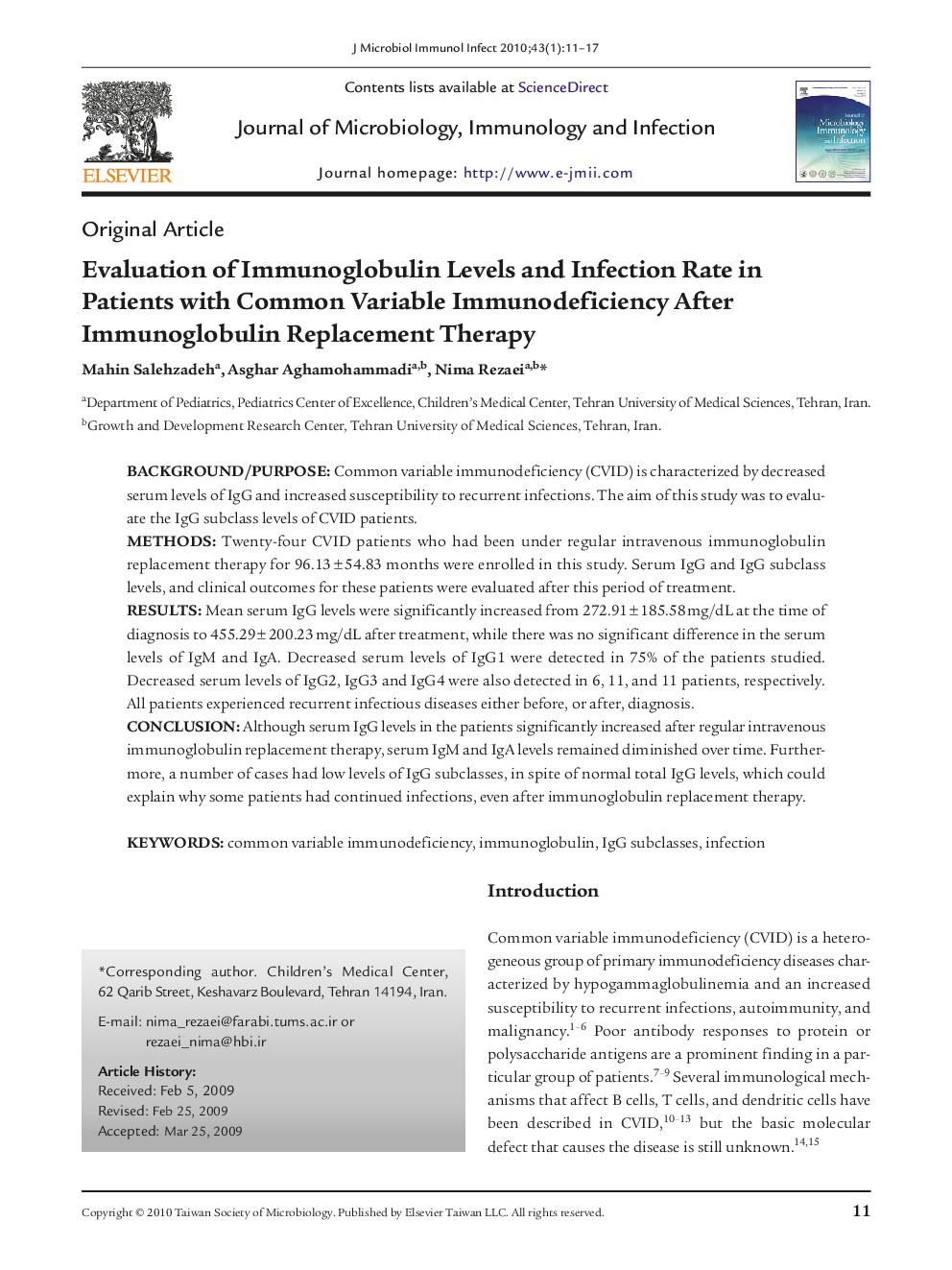| Article ID | Journal | Published Year | Pages | File Type |
|---|---|---|---|---|
| 3378432 | Journal of Microbiology, Immunology and Infection | 2010 | 7 Pages |
Background/PurposeCommon variable immunodeficiency (CVID) is characterized by decreased serum levels of IgG and increased susceptibility to recurrent infections. The aim of this study was to evaluate the IgG subclass levels of CVID patients.MethodsTwenty-four CVID patients who had been under regular intravenous immunoglobulin replacement therapy for 96.13 ± 54.83 months were enrolled in this study. Serum IgG and IgG subclass levels, and clinical outcomes for these patients were evaluated after this period of treatment.ResultsMean serum IgG levels were significantly increased from 272.91 ± 185.58 mg/dL at the time of diagnosis to 455.29 ± 200.23 mg/dL after treatment, while there was no significant difference in the serum levels of IgM and IgA. Decreased serum levels of IgG1 were detected in 75% of the patients studied. Decreased serum levels of IgG2, IgG3 and IgG4 were also detected in 6, 11, and 11 patients, respectively. All patients experienced recurrent infectious diseases either before, or after, diagnosis.ConclusionAlthough serum IgG levels in the patients significantly increased after regular intravenous immunoglobulin replacement therapy, serum IgM and IgA levels remained diminished over time. Furthermore, a number of cases had low levels of IgG subclasses, in spite of normal total IgG levels, which could explain why some patients had continued infections, even after immunoglobulin replacement therapy.
